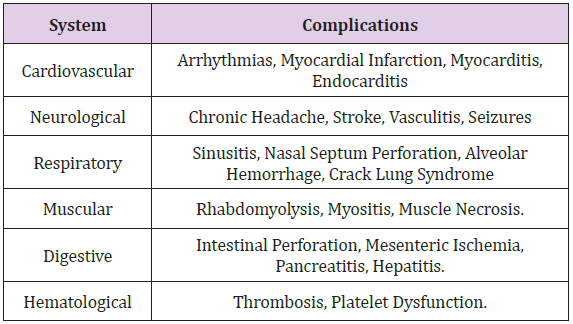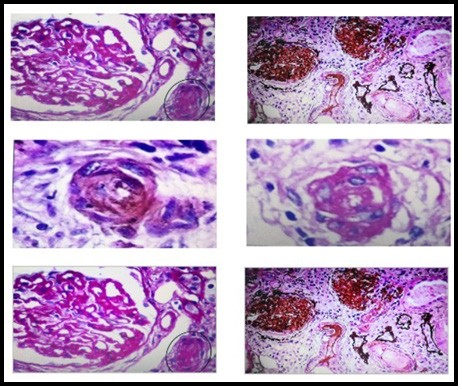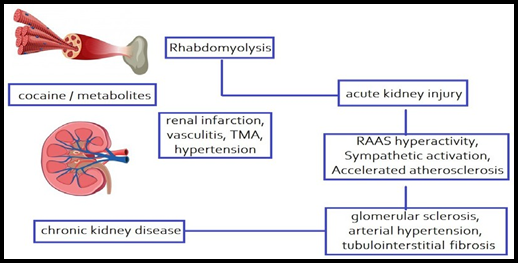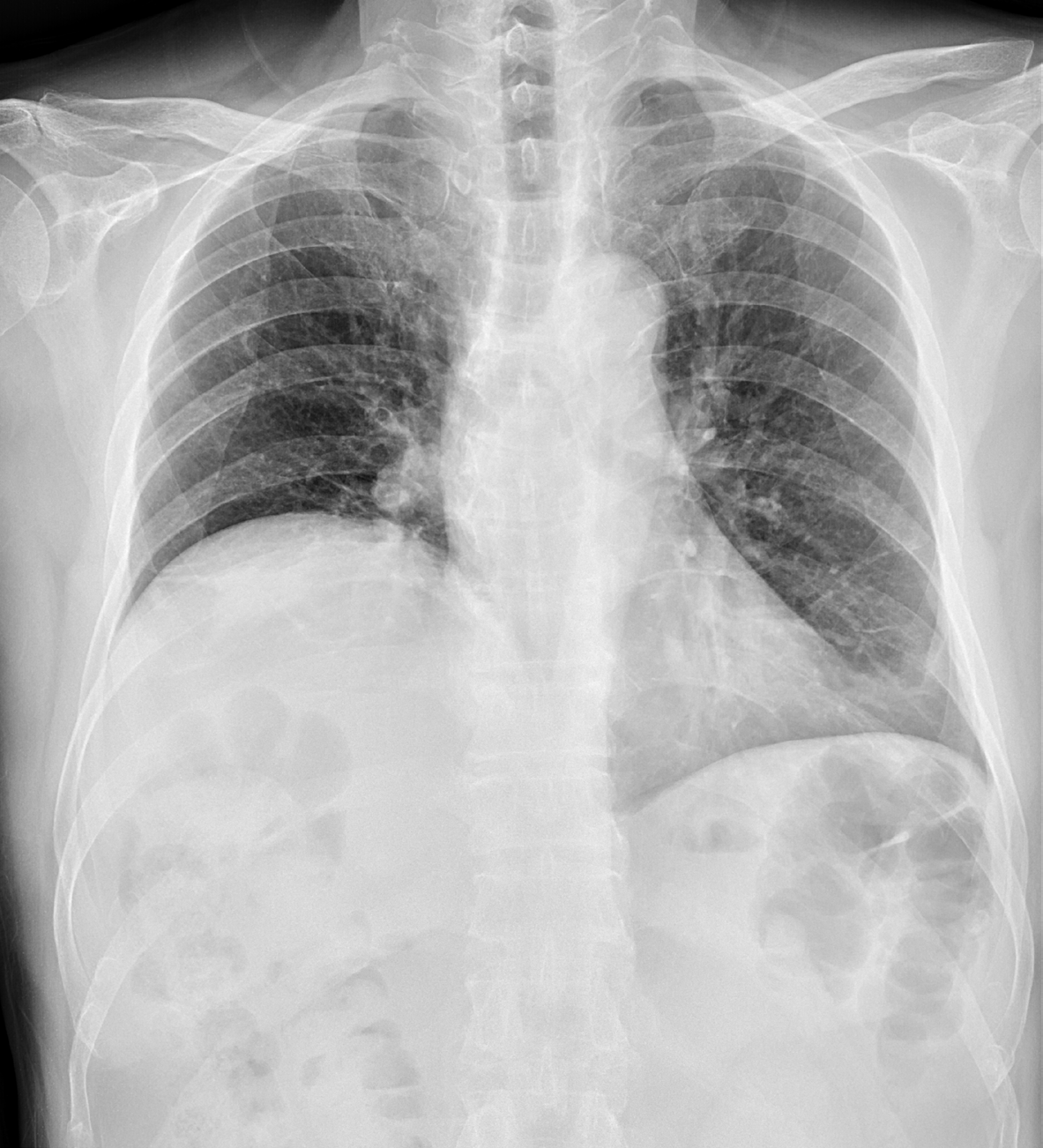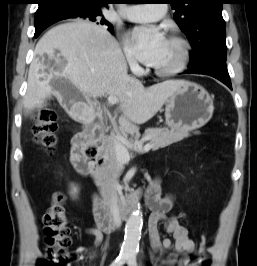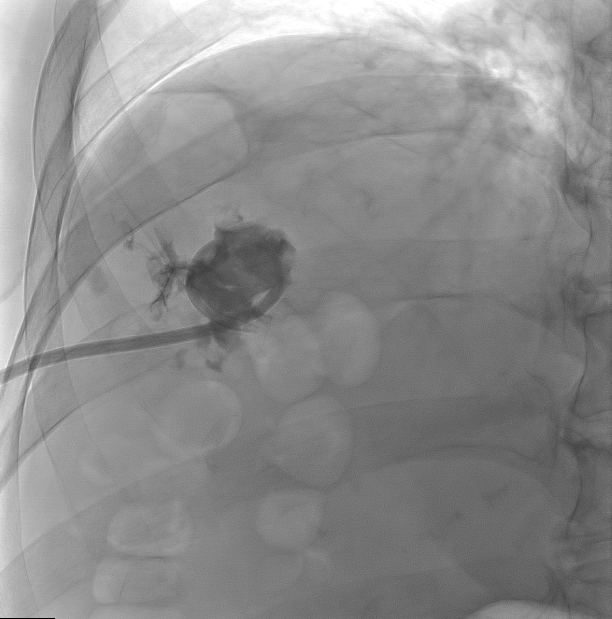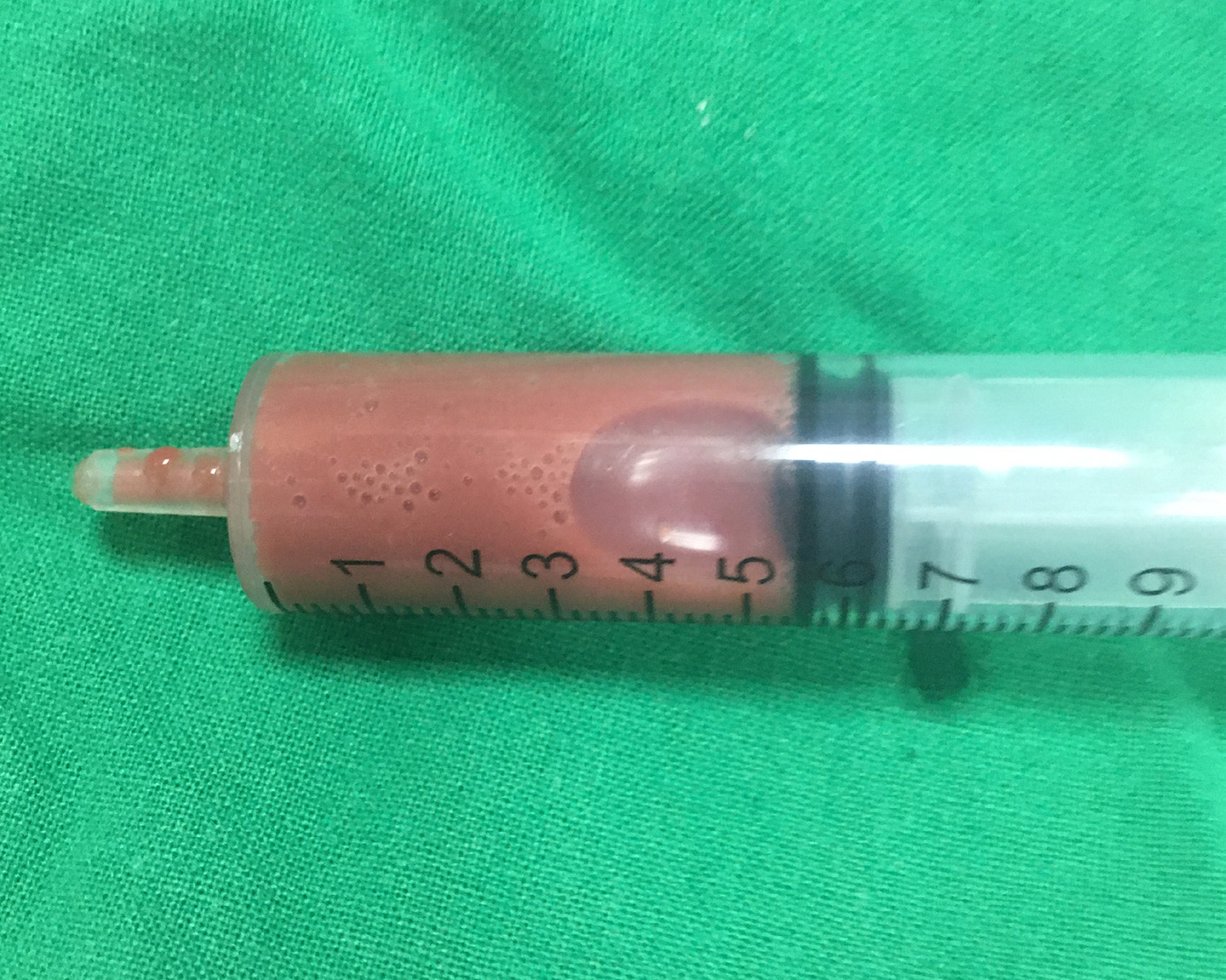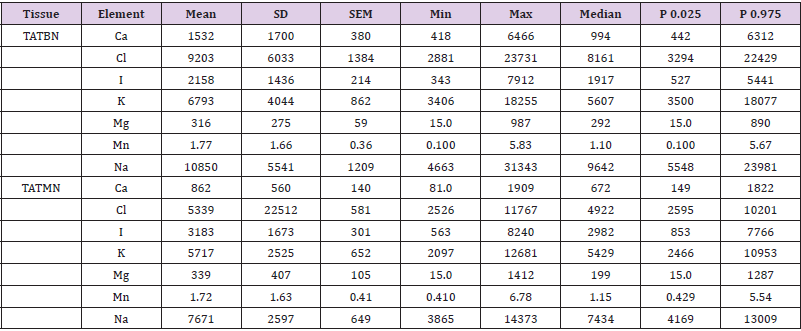Role and Relevant Significance of Autonomic Nerves in Esophageal Tumors
Introduction
Tumor cells continue to proliferate in human body which is a very complex environment. The impact of tumor microenvironment on the occurrence and development of tumors is also one of the key directions of tumor prevention and treatment, and the nervous system, especially the autonomic nervous system, is an important part of the tumor microenvironment. Many studies in recent years had shown that the human autonomic nervous system interacts with tumors and stromal cells to mediate the occurrence and development of a variety of malignant tumors. In addition, new evidence suggests that malignant tumors may reshape autonomic nerves states, thereby maintaining the growth and survival of tumor cells [1]. Therefore, exploring and clarifying the autonomic nerves state of the human body with different tumors is of great significance to the research of tumor diseases. This article will make an exploratory analysis and exposition of autonomic nerves states in esophageal cancer and find ways to slow down the development of the tumor.
The Relationship between the Vagus Nervous System and the Occurrence and Development of Esophageal Cancer
It is well known that the esophagus is innervated by the vagus nerve and the spinal nerve. AS the vagus nerve and the esophagus go together, and anatomical studies had also confirmed that the vagus nerve is the most densely distributed on the esophagus, we need to consider whether the vagus nerve plays a role in esophageal lesions. At the same time, there are phenomena indicating that the vagus nerve in the distal esophagus has low distribution density and small branches, and this area is the high incidence of esophageal cancer. Therefore, some people suspect that vagal denervation may promote the occurrence of esophageal cancer. Ai Qun Wu and some other scholars [2] found that local anastomotic adenosquamous carcinoma was the main cause of recurrent esophageal cancer after surgery, and Esophageal motility disorders such as delayed gastric emptying after surgery were important reasons for the recurrence of this cancer, which suggested that vagal nerve injury may be related to the recurrence of esophageal cancer.
At the same time, Ai Qun Wu et al. believed that the vagus nerve and its transmitter acetylcholine (ACh) can inhibit esophageal cancer by reducing the inflammatory response which leads to oxidative membrane damage and DNA damage. In subsequent cell experiments, acetylcholine and norepinephrine could upregulate DNA repair enzyme expression in the cells of esophageal cancer and promote cell differentiation, which suggested a close relationship between these two neurotransmitters and cancer cell transformation. Except for Ai Qun Wu’s discussion on the relationship between vagus nerve and esophageal cancer, we have not find any other papers on this aspect. This suggests that the decrease of vagus nerve excitation can promote the occurrence of esophageal cancer, which may be just a guess, but not been effectively proved.
The Relationship between the Sympathetic Nervous System and the Occurrence and Development of Esophageal Cancer
As for the relationship between sympathetic nerve and the occurrence and development of esophageal cancer, most of the current studies focus on β receptors. Liu, et al. [3] used β-receptor selectors to regulate esophageal cancer cells and found that β -receptor agonists could promote cell proliferation, while β-receptor blockers significantly inhibited cell proliferation, suggesting that β-adrenergic receptors of the sympathetic nervous system are related to the growth of esophageal cancer. However, β receptor is related to the proliferation of a variety of tumor cells, such as breast cancer, gastric cancer, pancreatic cancer, malignant melanoma, prostate cancer, etc. and studies had shown that the use of β-adrenergic receptor blockers did not improve survival in patients with common cancers [4]. Therefore, whether there is a clear relationship between sympathetic nerve and esophageal cancer still needs to be confirmed.
Relationship between the Occurrence and Development of Esophageal Cancer and Nitric Oxide (NO)
It can be seen from the above studies that the autonomic nervous system, which is mainly composed of the sympathetic nerve and vagus nerve, does not seem to have much influence on the occurrence and development of esophageal cancer. Is the growth of esophageal cancer not affected by the tumor microenvironment constructed by the autonomic nervous state? However, it is not likely to grow independently. Could there be a non-adrenergic, non-cholinergic nerve that plays a role in esophageal cancer? NO is the important inhibitory non-adrenergic, non-cholinergic neurotransmitter, it mainly exists in the tissues of the gastrointestinal tract and is responsible for regulating the movement of the gastrointestinal tract [5]. It is generally believed that the release of NO in gastrointestinal tract is related to nitric oxide synthase (nNOS) expressed on the neuroexpandable membrane of intestinal neurons [6].
There is a large literature showing that nitric oxide (NO) plays a role in the development of esophageal cancer. For example, in the 57 cases of human esophageal squamous cell carcinoma studied by Tanaka et al. [7], high expression of iNOS was detected in 50 cases (87.7%), while the expression of iNOS was weak in esophageal non-neoplastic diseases. McAdam, et al. [8] found that iNOS/NO can induce DNA damage and nuclear factor -κB (NF-κB) signal transduction in esophageal cells, leading to the occurrence of esophageal cancer. Chen, et al. [9] found that selective iNOS inhibitors can significantly inhibit the progression of esophageal cancer by reducing NO production. Chen, et al. [10] found that benzo (a) pyrene in tobacco can increase the expression of iNOS, leading to the occurrence of esophageal cancer. These studies indicate that NO, a non-adrenergic and non-cholinergic neurotransmitter, plays a definite role in the occurrence of esophageal cancer.
The Tumor Mostly Occurs in the Middle and Lower Esophagus, Which May be Related to the Release of NO
Studies have shown that the contraction and relaxation of the lower esophageal sphincter are mainly affected by the action of NO [11-13], so where is the main source of NO in the esophagus? Kuramoto, et al. [14] found that nitric oxide synthase (NOS) in the esophagus is mostly concentrated on Fos neurons, while the distribution of Fos neurons in the esophagus gradually increased from the oral cavity to the gastric end and was highest in the abdominal esophagus. This is consistent with the common clinical phenomenon that esophageal cancer occurs in the middle and lower segments. It was also found that when the esophageal vagus nerve was stimulated, NOS in Fos neurons first showed high expression. Thus, it could release a large amount of NO to inhibit esophageal movement, while Fos neurons only expressed a small amount of acetylcholine transferase [14,15]. Meanwhile, Vazquez, et al. [16] showed that nitric oxide synthase inhibitors can promote the release of acetylcholine in the brain. Leonard, et al. [17] showed that NO can regulate the release of ACh. This can reasonably explain why there may be a relationship between vagus nerve and esophageal cancer mentioned in this paper, but no further research has been conducted.
The Occurrence and Development of Esophageal Cancer is Closely Related to Inos/NO, Especially Squamous Cell Carcinoma
As a physiological messenger, NO is synthesized by three different gene-encoded NO synthases (NOS) in mammals: neuronal NOS (nNOS or NOS-1), inducible NOS (iNOS or NOS- 2) and endothelial,NOS (eNOS or NOS-3). NO regulates a variety of important phy-siological responses, including vasodilation, respiration, cell migration, immune response and apoptosis. All these features are relevant in cancer [18]. It may be related to concentration, location, targets, source and other factors, NO can plays a role in promoting as well as inhibiting tumors [19,20]. In esophageal cancer, a large number of studies have found that iNOS/NO is closely related to the occurrence and development. For example, Kumagai, et al. [21] showed that the expression intensity of iNOS is positively correlated with the depth of tumor invasion of the esophageal wall. This may be due to iNOS and COX- 2 from cancer cells induce angio-genesis from the early stage of esophageal squamous cell carcinoma (ESCC) progression, in which NO produced by iNOS has been reported to enhance the activity of COX-2 [22].
Bednarz-Misa’s research has shown that Esophageal squamous carcinoma might be locally characterized by upregulated expression of genes encoding glucose transporter 1 (GLUT1) as well as inducible nitric oxide synthase (iNOS) and ornithine decarboxylase (ODC) of the L-arginine/nitricoxide (NO)/polyamine pathway. Karakasheva, et al. [23] found that iNOS could induce CD38-expressing in myeloidderived Suppressor in a Murine model of oral-esophageal cancer, thereby promoting tumor Growth. In esophageal adenocarcinoma, the Reflux esophagitis causes Barrett’s metaplasia [24], an abnormal esophageal mucosa predisposed to adenocarcinoma; McAdam’s research has shown that the protein levels of iNOS in esophageal adenocarcinoma was increased and the activity of DNA damage induction and nuclear factor-kappa B (NF-κB) signalling was dependent on iNOS/NO. Vaninetti, et al. [25] found that the expression of iNOS mRNA is higher than induced esophagitis and Barrett’s in esophageal adenocarcinoma, while Ferguson, et al. [26] explored the association Between iNOS polymorphisms and risk of esophageal adenocarcinoma, Barrett’s esophagus, or reflux esophagitis, did not show a positive result in the experiments.
Therefore, the role of iNOS/NO in esophageal adenocarcinoma remains to be further explored. Takala, et al. [27] found that iNOS positivity was more com-monly seen in squamous cell carcinomas than adenocarcinomas in esophageal cancer patients. For other types of NOS, only Chandra, et al. [28] detected NOS-3 expression in tissue samples of 20 patients with esophageal adenocarcinoma. It can be seen from the above studies that the expression of iNOS is more closely related to esophageal squamous cell carcinoma, and we can intervene the development of ESCC by inhibiting the expression of iNOS/NO.
Screening Drugs for Esophageal Cancer through Inos/ NO Pathway, Traditional Chinese Medicine May be the Best Choice
The role of iNOS/NO in the occurrence of esophageal cancer has been found, so what is the effect of relevant inhibitory drug intervention based on this? A study found that L-748706, a selective COX-2 inhibitor, and S,S′-1,4-phenylene-bis(1,2-ethanediyl)bisisothiourea (PBIT), a selective iNOS inhibitor, significantly inhibit NMBA-induced rat esophageal tumorigenesis [9,29]. Chen, et al. [30,31] found lyophilized Strawberries significantly reduced the protein expression level of iNOS and were shown to be effective in the prevention and treatment of esophageal cancer. Many studies have found that traditional Chinese medicine can achieve different therapeutic effects by interfering iNOS/NO. Guo, et al. [32] quickly screened and identified iNOS inhibitors from Ophiopogon japonicus. Chen, et al. [33] screened effective anti-inflammatory drugs by measuring the iNOS/NO inhibitory effect of extracts of 81 Kinds of traditional Chinese medicines. Mei, et al. [34] found two new ingredients from Lonicera Macranthoides, exhibited inhibitory effects on iNOS. Tian, et al. [35] found Berberine attenuates Renovascular hypertension and Sympatholay via the iNOS Pathway.
Such as Viola Yedoensis Makiho [36], Illicium Difengpi [37], Plantanone C [38] and Tribulus Terrestris L [39] can downregulation the expression of iNOS. It can be concluded that screening drugs for the prevention and treatment of esophageal cancer from Chinese herbal medicine through iNOS/NO pathway has great advantages. Qigesan, Shashen Maidong Decoction and other traditional Chinese medicine prescriptions for the treatment of esophageal cancer, as a kind of empirical medicine, it is still used in clinical Chinese medicine and has shown good results. Our previous studies found that Qigesan significantly inhibited the migration and invasion of esophageal cancer cells in vitro [40], and Qigesan inhibits esophageal cancer cell invasion and migration by inhibiting Gas6/Axl-induced epithelial-mesenchymal transition and NF-κB expression [41,42]. In the next step, we can use the iNOS/NO pathway to more accurately screen the active ingredients of related drugs from traditional prescriptions.
Conclusion
In conclusion, during the occurrence and development of esophageal cancer, the human autonomic nervous system releases a large amount of NO and only expresses a small amount of ACh, thus promoting the progression of esophageal cancer. Therefore, we can also treat esophageal cancer by inhibiting NO and increasing ACh. In this respect, the relevant research and clinical experience of traditional Chinese medicine are worth our reference.
For more Articles on: https://biomedres01.blogspot.com/
